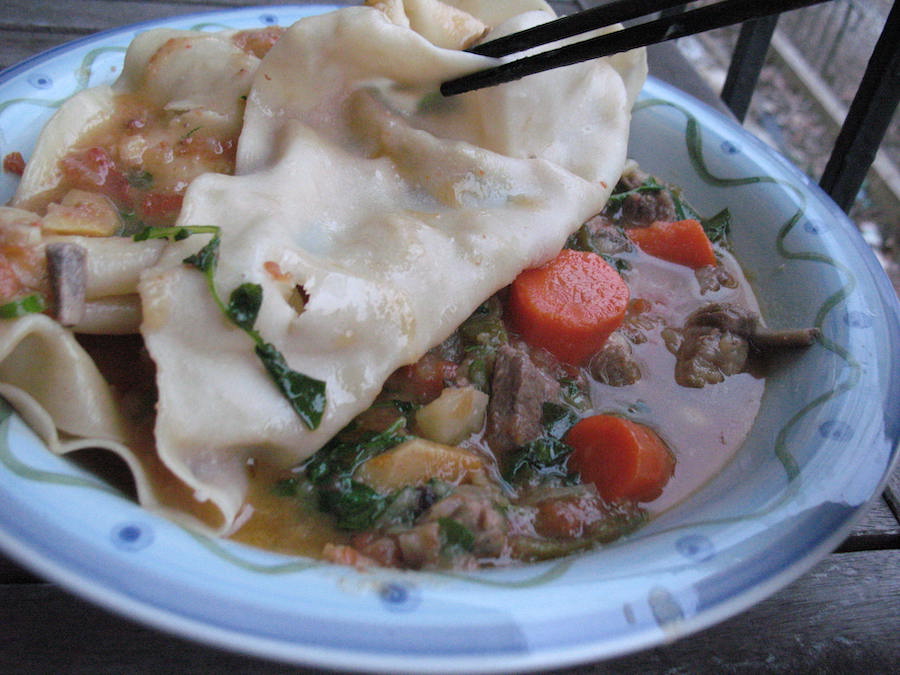
Greetings after a long hiatus! Even though I haven’t been reporting here as much as I’d have liked, since my last post I have been continuing on my journey through culinary traditions on the frontiers of Turkic, Mongolian, and Tibetan food culture. Today’s theme is a style of cooking that is shared among three cultures between Xinjiang and Mongolia: Uyghurs, Kazakhs, and Mongols. It is “covered” meals–i.e. a soup, stew, or stir fry topped with either an unleavened noodle or leavened bread dough. The resulting dish pairs a savory dish underneath with either a gummy noodle or something more like a braised bread dumpling on top.

I imagine this cooking method would make a lot of sense for those hoping to maximize cooking fuel while being able to cook all meal components in the same pot. As the stew simmers or as a stir fry cooks, a dough cover (or even multiple covers) can be draped over the top to steam and/or braise until cooked. This produces a noodle or bread with a slightly gummy texture that is a hearty and pleasant complement to the stew, soup, or fry. Perhaps needless to say, this cooking technique would be particularly apt for cooking with a kazan or togoo (i.e. the heavy cauldron typical among Central and Inner Asian nomadic peoples over a stove) in a ger or yurt.

I first came in contact with this genre of food with a fabulous Mongolian language cookbook find in 2016 published by the restaurant chain Nomads (Уламжлалт монгол хоолны 99 жор [99 Recipes of Traditional Mongolian Foods], Admon publishing). In that book, several braised meats, stews and soups are topped with a thick noodle, either while cooking in the cooking pot, or steamed separately and then tented over the dish as it is served. Mongolian examples include classic dishes like жимбий, “jimbiy” (see here for a nice Facebook video demo by Bayan Kitchen, and битүү шөл “covered soup”. For a beautiful short film of that home-style recipe, check out a recent video from ARTGER and Nargie’s Mongolian Cuisine.
I’ve found several parallel dishes to those Mongolian recipes in Eastern Xinjiang in Uyghur and Kazakh food culture in cookbooks and DVDs that I collected from my bittersweet trip to Kashgar and Hotan last year. Ultimately I think the link between these dishes is nomadic cooking, with both the meat stew and staple starch together in the same pot. I theorize this came into Uyghur food culture via the Kazakhs, as the dish seems to be most common in Eastern Xinjiang regions near Kazakh communities.
It is often even identified with Kazakh place names when talking about dishes in Uyghur and Chinese. For example, the stew topped with a leavened bread is sometimes referred to as Mori yapmisi after the Mori Kazakh Autonomous County north of Turpan. In Chinese, the thinner noodle-topped stew is often referred to as “Barkol braised noodles” 巴里坤羊肉焖饼, after the Barkol Kazakh Autonomous County. Hunan’s MangoTV recently posted a video about this dish featured at an Urumchi restaurant called 九胜 that specializes in NE Xinjiang food. As seems to happen often in Chinese tourist videos of Xinjiang, the host is for some reason obliged to dress up like a Uyghur dancer before she tries this specialty.
Kazakh examples of this type of dish are harder to locate online. That said, I did find that Uyghur word yapma ياپما that implies “covered” has a cognate in Kazakh with jappa جاپپا or жаппа. This dish known as jappa is usually a dry-fried meat, onion, and root vegetable preparation known as quwirdaq (қуырдақ is also a cognate to the Uyghur qordaq!), topped during cooking with a flat noodle, and then plated by inserting the dry-fried stuffing into a noodle envelope. That dish is illustrated in this very short Facebook video from the Almaty restaurant Қуырдақ көкесі in Kazakhstan.
Recipe: Uyghur-style yapma (2 ways) – Uyghur yapmisi ئۇيغۇر ياپمىسى
Though a Mongolian friend recently referred to this as a “lazy” dish, I find it very charming and satisfying. Recipes for this dish vary greatly based on regions and ingredients available. That said, Uyghur recipes for the stew underneath closely resemble classic qordaq (see here for a past post on that theme) home-style stews of mutton, beef, or chicken, with onions, root vegetables, and spices.
The process is simple. Bring a stew to near completion before topping with a noodle or bread dough. If you are using a leavened bread dough, lay the bread atop the stew or braise for 20 minutes before finishing). Noodle doughs need much less time, but thick noodles might take up to 10 minutes. Hopefully your stew has enough stuff poking out of the water that your noodle or bread is steaming more than boiling. That would likely be easier in a kazan or wok, but make sure you have a lid that fits!
For the recipe below, I first cooked flat noodles atop the qordaq stew and removed them to a plate before finishing the stew with a leavened bread dough, in order to show two separate presentations. For either dough used about 1 cup of flour.
Stew ingredients:

Coarsely chopped mutton ribs 
Qordaq ingredients clockwise: Potatoes, garlic, ginger, white peppercorn, huajiao (sichuan peppercorn), star anise, tomatoes, peppers, green onions, white onion, carrot
Process:

Mix up and rest a noodle or yeast bread dough (bread dough pictured). For a large pan or wok, about 1 cup of flour will yield a thick flatbread or 2 thick wide noodles. 
Cover your dough and let rest for at least 30 minutes.
See image captions for more instructions. For a noodle dough, 1 cup of flour will make 2 wide discs or one thicker flatbread. In either case, add about 1/2 tsp salt to the flour and enough water (likely less than 1/2 cup) to hydrate the dough. For the bread dough, use 1/2 tsp or less yeast, and let rest to rise.

Fry meat. Add onions. 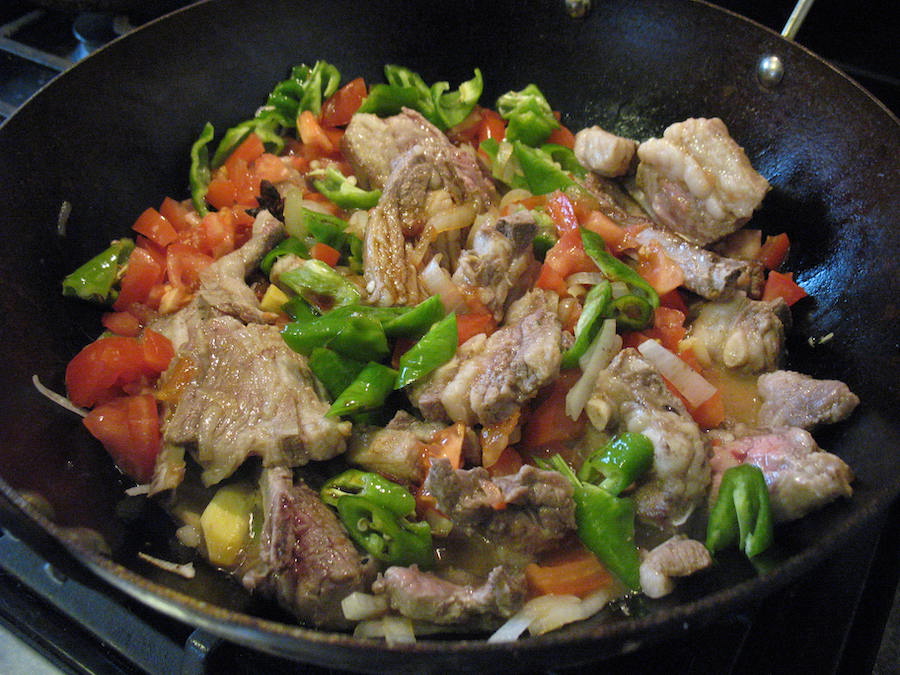
Add garlic, ginger, peppers, tomatoes, crushed white pepper, star anise, and huajiao. Season with salt and/or soy sauce.
Fry ingredients, top with water and simmer as you would any other stew preparation.


Version 1: noodle(s) on top of the stew. Cook thick noodles for up to 10 minutes. Thinner noodles need less time 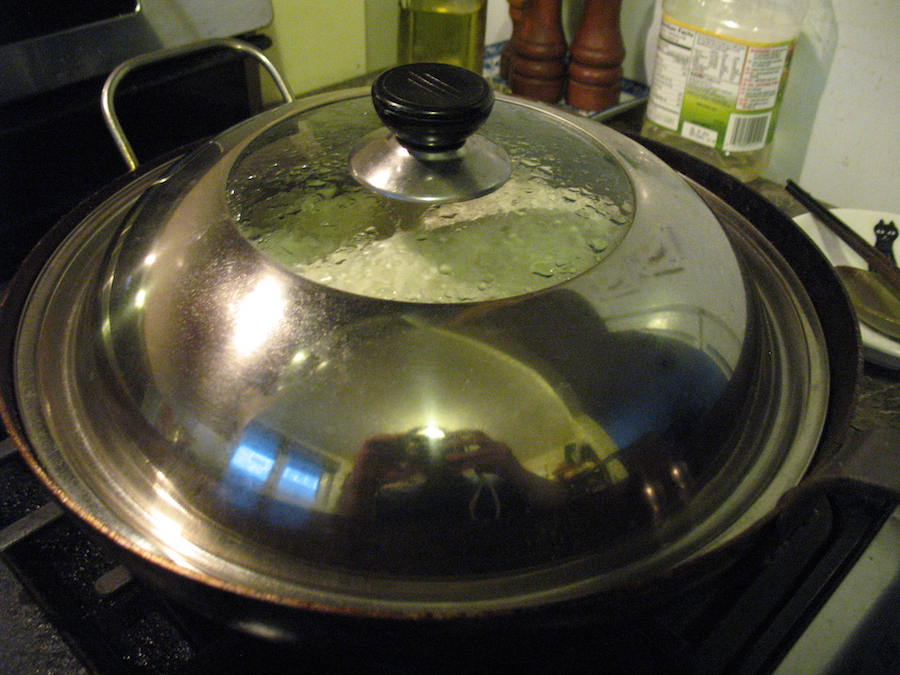
Cover stew to help noodle or bread cook through 
These are cooked noodles for preparation #1
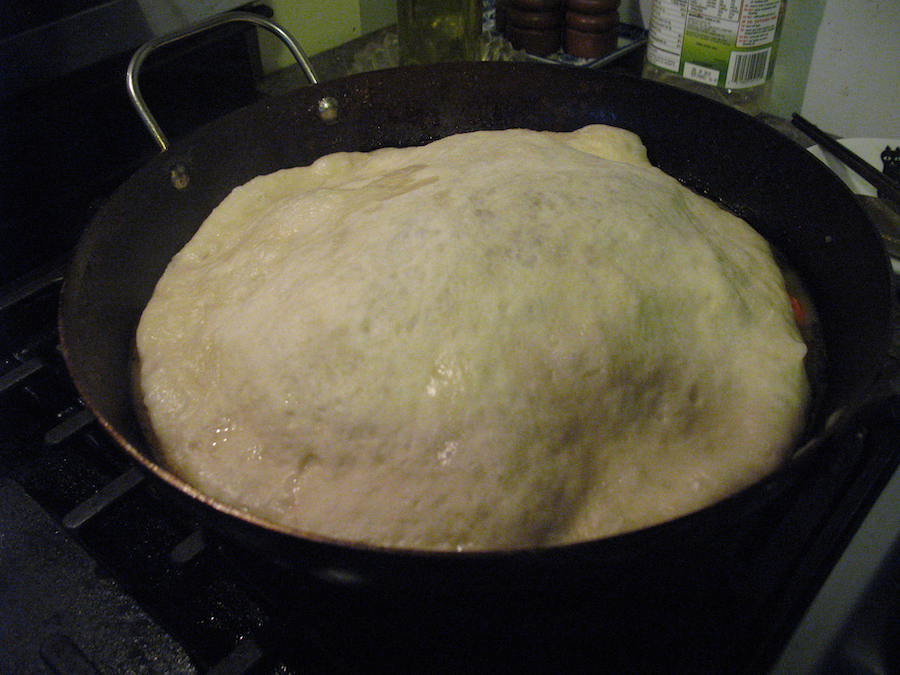
Version 2: leavened flatbread on top of the stew. Cook for 20-25 minutes. 
Cover to help bread cook through 
The bread is heavier than the noodle, and it will be easier to shift after folding 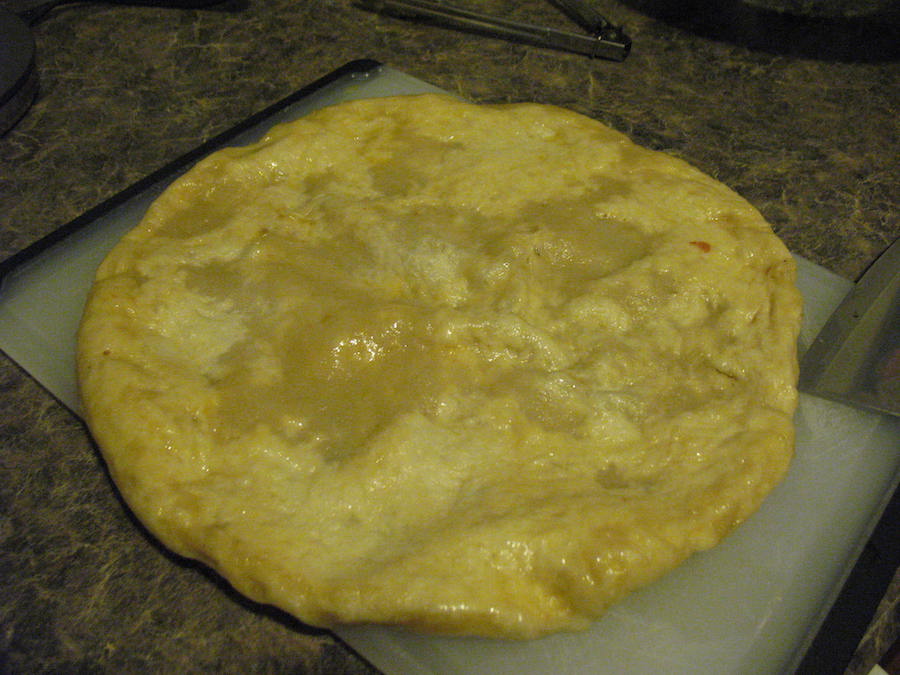
steamed/braised flatbread 
cut into pieces (wedges are common)
Finish stew with any final tender ingredients (i.e. herbs). Many traditional Uyghur yapma recipes include spinach, and this would be the time to put it in. I had some young watercress handy and just wilted the whole bag’s contents into the stew. In hindsight, I found the flavor and texture of this watercress to be similar to a traditional Uyghur green vegetable bedae بېدە (usually translated as “alfalfa”). It was a nice touch.
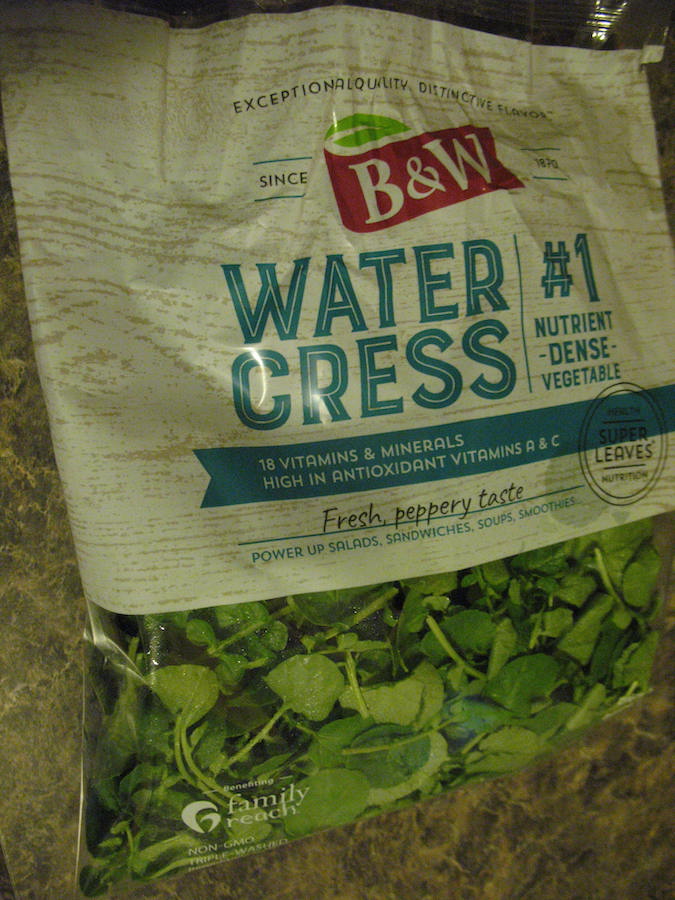
Baby watercress greens. Great on/in anything. 
Tender greens wilt quickly into hot food. 
Finished qordaq stew

Enjoy!
Hi Dave, would you happen to know where I could order the cookbook. I was able to send an e-mail to a restaurant in Mongolia that carried it but didn’t get back reply. I’d love to check it out.
LikeLike
Hi Ro, last year Nomads restaurant group republished the book and added a 2nd volume! Both volumes are very thorough and VERY interesting. Unfortunately I haven’t seen the book through any online vendors. You could ask for a 3rd party to buy it and send it to you. The ACMS in Ulaanbaatar would do that for a small fee: mongoliacenter.org. Last year they were selling it at the restaurant chain and also at Internom bookstore in UB.
LikeLike